St. Paul’s Cathedral, an Anglican cathedral, is the cathedral church of the Diocese of Melbourne and the seat of the Archbishop of Melbourne (who is also the metropolitan archbishop of the Province of Victoria and, since June 28, 2014, the present seat of the Primate of Australia).
Here are some interesting trivia regarding the cathedral:
- The cathedral was designed by the English architect William Butterfield, known for his distinctive interpretation of the Gothic Revival.
- It is one of Melbourne’s major architectural landmarks.
- To fit the block, the cathedral was orientated in line with the central city grid, just off the north-south axis, rather than facing east, the traditional direction.
- The location for the cathedral marks the place of the first public Christian service in Melbourne was conducted, by Dr. Alexander Thomson, in 1835.
- In contrast to the bluestone Gothic of St Patrick’s Roman Catholic cathedral, on the eastern hill of the city, as well as other grand 19th century public buildings faced in light grey sandstone imported from other states, the cathedral’s interior stonework is a mixture of sandstone from the Barrabool Hills and Waurn Ponds limestone, with contrasting stripes of Victorian bluestone, that gives the cathedral a warm coloring. Also, because the spires are built from Sydney sandstone and are 40 years newer, they are different and darker in color than the older parts of the building.
- Once the Moorhouse Spire, the central spire, was completed to its full height of 95 m. (312 ft.), St Paul’s became the tallest structure in central Melbourne. With the retail heart height limit of 40 m., it has retained its dominance of the immediate area, dominating the city’s skyline when viewed from the south. For nearly 40 years, even without the spires, the cathedral presented a rather solid, horizontal mass.
- From the southern approaches to the city, St. Paul’s Cathedral occupies a prominent and dominating location at the center of Melbourne, being situated diagonally opposite Flinders Street station (the hub of 19th-century Melbourne and an important transport center) and, immediately to its south, Federation Square (the new public heart of Melbourne). Continuing south down Swanston Street is Princes Bridge, which crosses the Yarra River, leading to St Kilda Road.
- Besides Sunday and weekday Eucharists, the cathedral maintains the English tradition of a daily choral Evensong, being the only Australian Anglican cathedral to do so.
- Its 2009 restoration project was acknowledged by the Australian Institute of Architects, the Victorian Chapter Heritage Architecture Award 2009 and the Lachlan Macquarie National Award for Heritage Architecture 2009.
Check out “Federation Square,” “Flinders Street Station” and “St. Patrick’s Cathedral”
The awe-inspiring St. Paul’s Cathedral, planned in a traditional Latin cross, has a long nave, side aisles, short transepts, a tower at the crossing, with choir below, sanctuary and altar beyond, and a pair of towers framing the ceremonial main entrance.
The cathedral’s Gothic transitional architecture combines Early English and Decorative Gothic styles. Highlights include the fine polychromatic brickwork, beautifully patterned floor and wall tiles and mosaics, banded masonry stonework, exquisitely timbered roof and tiled dado walls.
It has played host to many prime ministers, premiers, governors, governors-general and other significant people; hosted many significant occasions in national, Commonwealth and international history; and continues to be the choice venue for many state funerals.
Here’s the historical timeline of the cathedral:
- In 1880, the foundation stone was laid by the Governor of Victoria, John, Earl of Hopetoun (later Marquess of Linlithgow), in the presence of the Rt Revd Charles Perry, Bishop of Melbourne.
- In 1884, Butterfield resigned due to disputes between him and the church authorities in Melbourne. The job was then awarded to a local architect, Joseph Reed (of the Australian firm Reed, Henderson and Smart), who completed the building generally faithfully to Butterfield’s design
- In 1889, Reed designed the attached chapter house in a style matching Butterfield’s.
- On November 15, 1889, the cathedral’s bells were dedicated and first rung for the departure of Sir Henry Loch (later Baron Loch), the Governor of Victoria.
- On January 22, 1891, the cathedral (without the spires) was consecrated by the Rt Revd Field Flowers Goe, Bishop of Melbourne.
- In 1926, construction of the spires began to a new design by John Barr of Sydney, in a more traditional Gothic Revival style and with different stone from the Sydney area. It was also much taller than Butterfield’s original design.
- In 1929, the pipe organ was rebuilt by Hill, Norman & Beard when the action was electrified and a new console supplied.
- In 1932, the spires reached their full height
- On April 30, 1933 a service of thanksgiving was held for their completion.
- The 1960s saw extensive work completed to the exterior of the cathedral
- On November 28, 1986, on his arrival in Melbourne, Pope John Paul II paid a visit to St Paul’s Cathedral in recognition of the dialogue between the Anglican and Roman Catholic churches in Melbourne fostered by their respective former archbishops, the Most Reverend Sir Frank Woods (Anglican) and the Most Reverend Sir Frank Little (Roman Catholic). As the Pope entered the cathedral, the choir sang “Ecce vicit Leo.” After this, the Pope prayed for Christian unity and lit a meter-long candle.
- From 1989 – 90, the $726,000 restoration work of the organwas completed, by Harrison & Harrison Ltd, Durham, with the help of a major National Trust The façade pipe stenciling was done by Marc Nobel, Christine Holmes and John Dale after a design by Lyon, Cottier, Wells & Company.
- On November 28, 2007, a carol service called Carols from St Paul’s Cathedral Melbourne featuring the cathedral choir, was recorded by the Australian Broadcasting Corporation and broadcast Australia-wide on Christmas Eve.
- In 2009, the A$18 million, seven-year major restoration works, under the guidance of Falkinger Andronas Architects and Heritage Consultants (now Andronas Conservation Architecture) and undertaken by Cathedral Stone, were completed. Significant repairs were done to restore the spires. Stone heads of the former dean David Richardson and the philanthropist Dame Elisabeth Murdoch, created by Melbourne sculptor Smiley Williams and carved by stonemason Daryl Gilbert, were added to the spires. Also installed were the colored glass “Eighth Day” lantern, in the Moorhouse Tower, and new dalle de verre colored glass doors, created by Janusz and Magda Kuszbicki, and a glass walled airlock for the west Great West door.
The interior, compared to the exterior, feature rich colors and strident color contrasts, characteristic of Butterfield’s work, with all the stonework constructed using Waurn Ponds limestone, its stripes contrasting with the very dark-colored local bluestone.
The dado (created with patterned glazed tiles), floor (entirely paved with encaustic tile imported from the English firm of Maw & Co., featuring both patterned layouts and patterns within the tiles), high altar and reredos (made from Devonshire marble, alabaster and glittering Venetian glass mosaics) are outstanding examples of High Victorian Gothic polychromy.
In Persian tile, on the rear wall of the narthex, is a replica of an 8-pointed star found in two churches of the Anglican Diocese of Iran (the church of St. Simon the Zealot in Shiraz and St. Luke’s Church in Isfahan). There are two baptismal fonts – a round font of Harcourt granite (installed when the cathedral was first built) and a cruciform immersion font (built in 1912 in memory of Field Flowers Goe, third Bishop of Melbourne). One of the carved figures on the pulpit is said to be the image of a daughter, who died in infancy, of the former Mayor of Melbourne.
The Chapel of Unity, a memorial chapel, commemorates the historic visit of Pope John Paul II: only the third time in four centuries when a reigning Pope had made an official visit to an Anglican cathedral.
The pipe organ, commissioned from English builder T. C. Lewis and Co (one of the most prominent organ builders of the 19th century) of Brixton, England, cost over 6,500 pounds for its construction, shipping and installation before it was played at the cathedral’s 1891 inaugural service .
Since then, various modifications and maintenance works have been carried out. After the 1989 -90 restoration, the organ, housed in the cathedral’s south transept behind newly stenciled façade pipes, now has four manuals and pedals with 53 stops, all with electro-pneumatic action.
St. Paul’s ring of 13 bells, a gift from Thomas Dyer Edwardes and all cast by Mears & Stainbank of Whitechapel Bell Foundry in 1889, consists of 12 bells set for change ringing in the key of C♯, plus an extra bell to allow different subsets of the full number to be rung still to a diatonic scale. The tenor originally weighed 31 cwt but, after the whole set was sent to Taylor’s Bell Foundry in 1963 for retuning, it now weighs 29cwt.
St. Paul’s Cathedral : 198 -206 Flinders Street cor. Swanston Street, Melbourne, Victoria 3000, Australia. Tel: 9653 4333. E-mail: welcome@stpaulscathedral.org.au. Website: www.stpaulscathedral.org.au. Open Mondays to Fridays, 8 AM – 6 PM; Saturdays, 9 AM – 4 PM and Sundays, 7:30 AM – 7:30 PM. Masses: Sundays (8 AM, 9 AM, 10.30 AM, 6 PM), Mondays to Saturdays (12.15 PM).

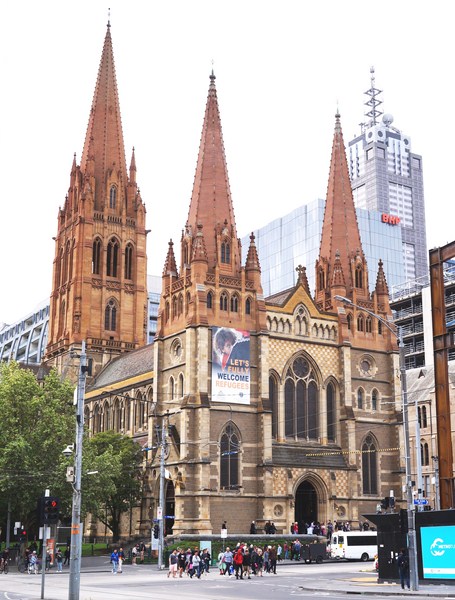


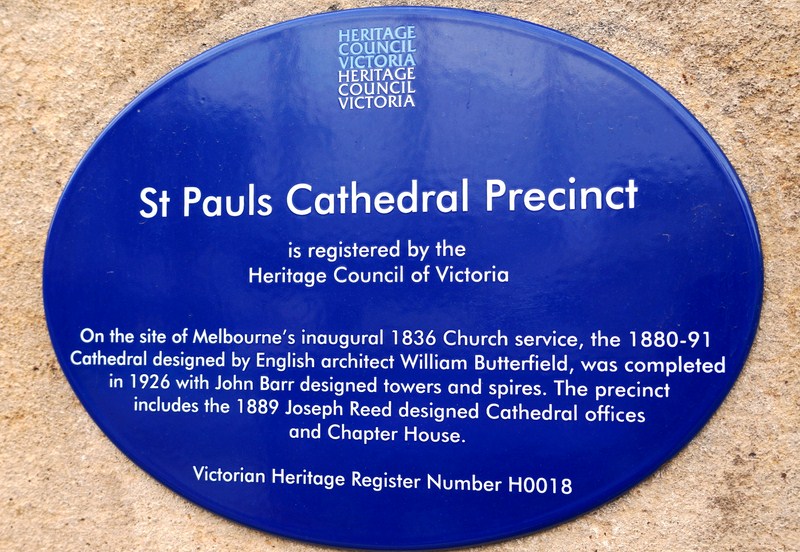

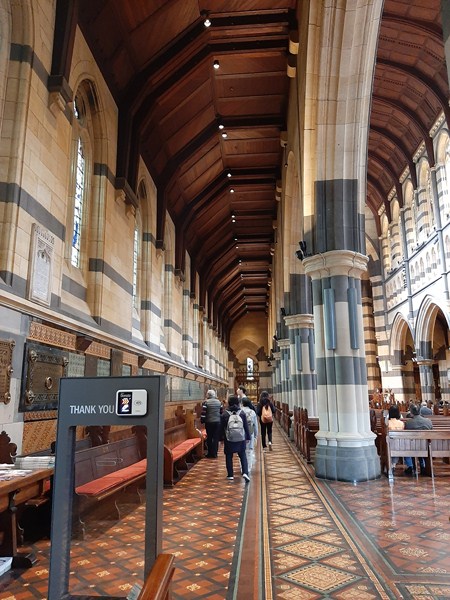
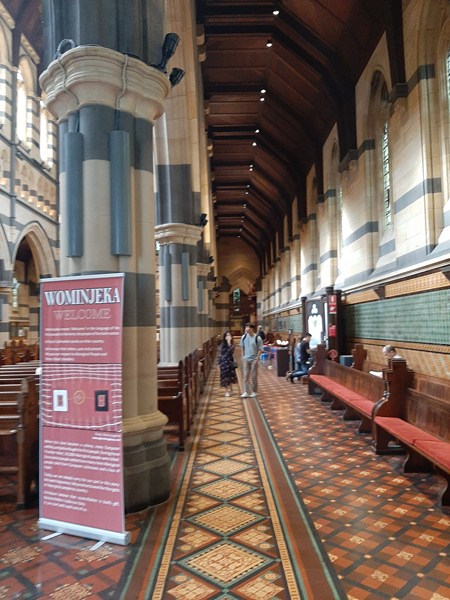
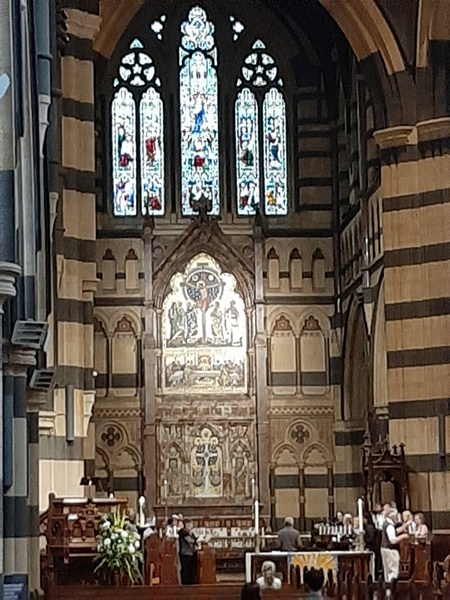
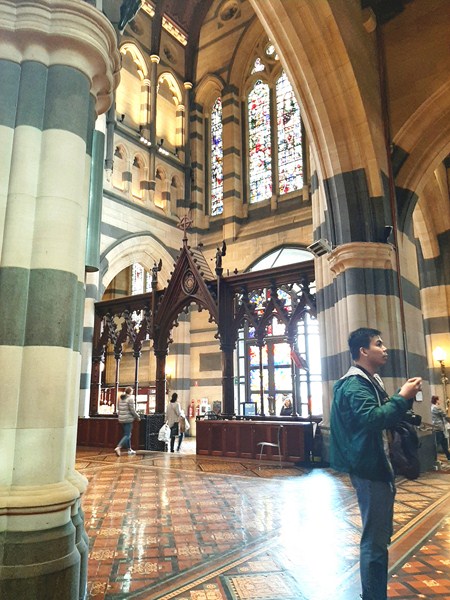
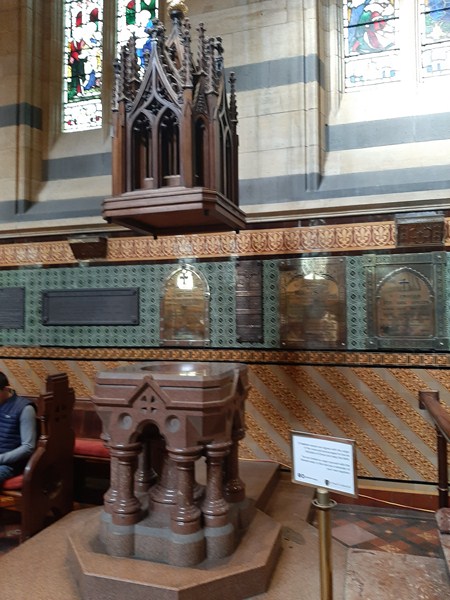
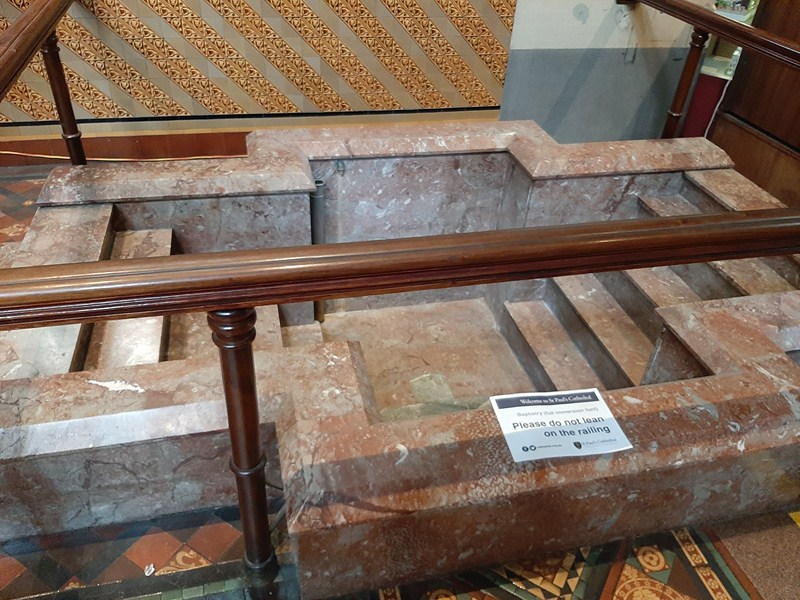
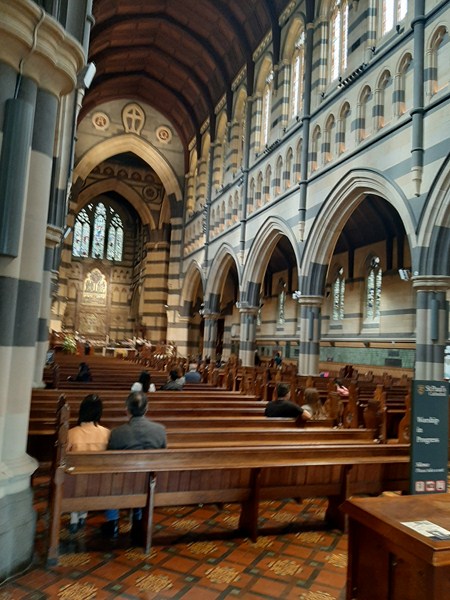

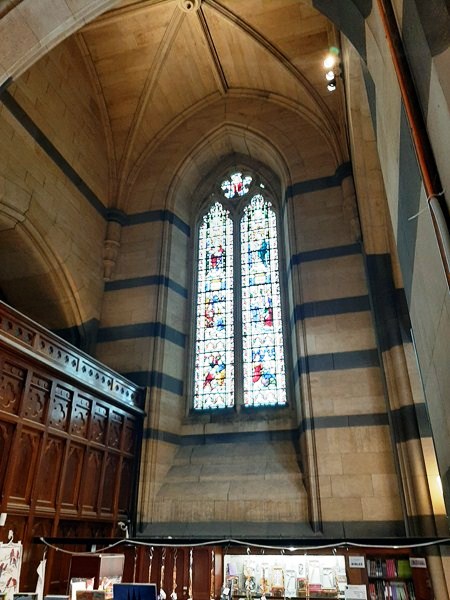
Hello,
I’m looking for website owners with blogs who are willing to partner with us,
We’d like to offer payments in exchange for articles published on http://benjielayug.com/2019/11/st-pauls-cathedral-melbourne-australia.html. We can either send you well-written content that’s ready to post, or you can write it yourself.
Of course, an even simpler solution would be to simply place a link inside one of your older articles, for a fee, of course.
We already work with thousands of other sites, both businesses and individual blog owners.
Would you be interested?r
Thanks,
Lora Stonden
Blogger Outreach Specialist
Interested. However, my blog is travel oriented. Is the content the same way?
St. Paul’s Cathedral is one of Melbourne’s major architectural landmarks. I like how they maintain this church. Such a nice historical site. Hope you do more blog posts here about historical sites. You can also check this melbofficefitouts.com.au out. Thanks for sharing all of this information.